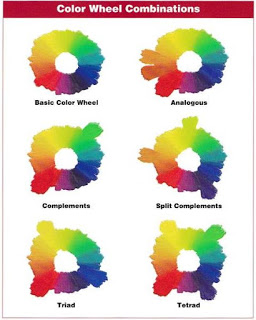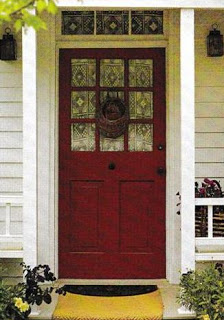Successful Painting Tools and Techniques
This is a four piece series on painting tools and techniques. Here in the first part I will examine masking and protective gear. Later in part 2 I’ll examine ladders and scaffolding and in part three I’ll talk about brushes and rollers. Finally, in part 4 we’ll look at sprayers, caulk guns, wire brushes, braces and knee pads, and swivel hooks.
The painting industry has made tremendous strides in the last decade. Today there’s a tool for almost every situation. Even I’m impressed by the ground breaking devices coming on the market, for example, dripless caulk guns, that have solved a messy problem.
Before you start your project, have a minute to check your equipment. You’ll probably need to fill up on several items. Make a complete list of what you need. Keep an eye out for tools that save time and labor. The more costly equipment, such as sprayers and scaffolding, can be rented.
Top Rated Protective Gear
Some people don’t believe it’s necessary to wear safety gear when they’re painting. I guess they think it’s wimpy. But I’ve performed around enough toxins to comprehend how dangerous they could be. Dust, painting mist, and vapors impact the lungs very quickly, and skin pores are an available target for solvents and dust borne particles. Don’t be foolish… protect yourself.
Challenges Of Respirators
A particle mask is better than almost nothing, but it generally does not form a good seal and it won’t filter out all the dust. If you do use a particle face mask, get one with double rubber bands. A damp handkerchief tied around your face gives better safety than particle masks that use lightweight rubber bands.
Double cartridge respirators are the safest solution. They’ll provide you with the protection you’ll need for most vapors, mist, and dirt. Respirators come in three sizes. Make sure that yours fits. If it generally does not fit well, it will not work very well. Checking the fit of a respirator is like examining the seal of a diving mask. Breathe then hold your hand over the side valves. The mask fits if it presses against the face and remains there while you hold your breath. Good respirators cost from $25 on up and usually include replacement filters. Double cartridge respirators have color coded filters for different impurities; check that you have the right filtration for the job. Make sure to read the instructions, and remember that you should change the cartridges if deep breathing becomes hard or if you begin detecting vapors.
Learn About Protective Clothing
Respirators execute a good job of protecting your lungs, but you need to protect the rest of the body as well. Having been authorized in lead abatement, I understand that your body can only just eliminate a very small ratio of lead, even over a 30 year span. Many painters make the mistake of thinking that a little contact with particles or VOCs won’t damage them, but it all adds up over time. I always dress for protection, keeping at least one good Tyvek painting suit on the job. Tyvek breathes well, weighs little, and provides good protection. The extra layer is a little warm, but I’d rather wear a paint suit than be covered with dust or overspray (on a hot day be sure to drink a lot of water to prevent dehydration). If you choose not to invest in a painting suit, wear clothes that you won’t mind turning into something resembling a painting palette.
I almost always wear leather gloves, even though I’m brushing. They keep my hands clean and my grip dry. I take two pairs of gloves if I’m painting more than one color, to ensure I don’t contaminate the colors. Commercial strength rubber gloves are another must. I wear rubber gloves to stain, to wash out brushes, sprayers, and rollers; to open, mix, and strain paints; and handle toxins such as paint thinners.
Rounding out my paint anywhere clothing are safety glasses or goggles to keep chips, dust, and spray mist out of my eye, and, if I’m spraying, a hood. If you spray with out a hood, be prepared to spend tons of time washing paint out of your hair.
Fast And Easy Masking
Usually the area you’re painting will have a finished floor or carpet and the proverbial ounce of prevention can save the day. Even if you’re only painting one inside home window, masking the floor is a good idea. Having an open can of paint makes me stressed if there isn’t a drop cloth on the floor. I’ve learned the hard way. Masking becomes even more important if you’re staining, because stain spatters all over the place. Several simple items can save you a lot of touch up, cleaning up, and attempting to get paint from the carpet before your spouse sees it. Before I finally quit and admitted that my approach wasn’t perfectly right and dripless, I spent more time touching up than I should have. Touching up is a fact of painting life, but these days I do significantly less of it because I take time to mask.
First, you need a drop cloth. Heavy cloth is often best, but drop cloths don’t have to be expensive, professional painter’s cloths. You can sometimes find pretty large drapes at thrift stores, for the cost of one thin plastic drop cloth. Search for drapes with vinyl backing, for added waterproofing. I cut out the top stitching for an additional 3 inches of material.
The difficulty with plastic drop cloths is that they weigh next to nothing and billow everywhere. Plastic material works best when you can find 3 foot wide paper (like the kind used for flooring insulation) to lie together with the plastic material. If I’m painting a big new home and I have to mask the whole floor, the plastic/paper masking system is inexpensive and is effective.
An excellent masking system is crucial whether you’re brushing, rolling, or spraying the paint. All you need is masking tape, paper for the outer edge of the floor and baseboard, and a thin layer of plastic material for the glass windows and furniture. 3M makes a good masking system that includes special painter’s tape and dispensers with pre-taped clear plastic. If you’ve ever before spent hours scraping tape adhesive off home windows, you can appreciate advanced masking tapes. Commercial masking dispensers are available at professional painting shops and sometimes at rental shops. If a commercial dispenser is difficult to find, simply buy a roll of heavy paper and use your wrist to carry the masking tape roll.
Some tapes need more stickiness for fixing plastic to rougher textures like walls. Other tapes need to come off without leaving adhesive on windows and smooth areas. Always wait at least four hours before removing tape to avoid tearing the paint. But don’t leave tape on for longer than a day or it’ll be hard to pull off.
Masking Floors Tricks
In addition to masking off the main areas to be painted, it is also good prevention to mask main traffic areas and wherever you plan to store and mix the paint. Distribute all the necessary drop cloths, then clean the areas you will be taping with vacuum cleaner, foxtail broom, or clean rag, to ensure a tight seal. As you mask, concentrate on getting a clean edge with the tape, and make sure the tape is solidly attached.
Tape and paper dispensers are ideal for masking off the outer edge of an area. They ensure a clean edge along the floor and minimize clean-up. I take advantage of shorter lengths of masking (1 ft. to 2 ft.) for corners and closets. On long, straight runs I favor going corner to corner with one long strip of tape, which reduces the amount of seams that should be taped. Once the perimeter is in place, I take advantage of drop cloths for the remainder of the floor. For greater protection, I always substantially overlap the masked perimeter with the drop cloth. On sides I also double the cloth to the inside, for extra protection and stability.
Obtaining a tight seal with a drop cloth is crucial if you are spraying a room, but safeguarding carpet or flooring with a sealed drop cloth is an excellent plan even if you’re just brushing or rolling. A drop cloth will move if it isn’t taped where it lies, and you’ll finish up on your knees cleaning paint off the floor.
Masking Walls And Fixtures Mistakes
Regardless of how you intend to apply the paint, you will have to mask permanent fixtures such as the ceiling lights, fans, and door knobs. Even though you have excellent hand control, cutting in (edging) the fittings that aren’t masked is frustrating, specifically for multiple coats of paint. To mask fixtures, pull off enough newspaper and tape to wrap the fixture, being careful to keep the tape just on the bottom of the fixture (newspapers also makes a good masking material for fixtures). If possible, release the fixture covers and wall mounts to paint under them; this ensures a seamless border.
The quantity of masking that you should do is dependent upon the type of house painting you will be doing. The only real time the wall surfaces need to be masked is when you intend to spray the ceiling and you need to keep the wall surfaces dry, for instance, if the ceiling is getting another color or finish. If the trim is clear coated or you intend to paint only the wall surfaces and ceiling, it’s wise to mask all over the trim, especially the windowsills.
How To Mask Windows
The sole time I mask windows is after I plan to spray. Taping glass windows isn’t very effective. It takes too much time and paint still gets under the tape, and masking tape has a knack for really adhering to glass.
For interior or exterior windows, I use the same system as for masking wall surfaces. Really the only difference is the fact that masking glass windows usually is faster than masking entire wall surfaces. Masking house windows and wall space is usually done with clear plastic, which lets light into the room and is also handy for covering large areas (paper is best for masking floor surfaces and trim). To measure plastic, I roll it out along the window, cut as straight of a line as is possible, and tape the perimeter of the windowpane. Then it’s simply a matter of sticking the clear plastic onto the exposed tape, working from the top down and being careful to keep it straight and level.
Masking paper also works well to safeguard windows, floor, and molding from paint spatters. To protect glass windows, apply masking paper over the top of the window casing. The width of the paper will do to block most of the roller spatter. This same technique protects the floor and molding. If you are assured about your brushing and rolling abilities use 1 ½ inch masking tape instead of masking paper.
No-Fuss Masking For Spraying
Spraying needs that anything not being sprayed should be completely masked. Because spraying requires such intensive masking, wait to mask until you’re prepared to spray. Outside surface spraying may need extensive masking, depending on number of colors and whether there are bordering buildings such as fences and electric power lines. When masking for spray, be sure you be detailed. Overspray is hard to regulate, especially under windy conditions. The more you’ve prepared for overspray, the better. The time spent masking is a lot less than the time you’ll have spent touching up afterward. A good seal with masking tape is crucial because sprayed paint gets almost everywhere. Overspray is similar to the casual drip from a brush every so often… one is certain to get from you, no matter how careful you are. Nevertheless, you can minimize overspray by double checking before you spray.
Sound Quality Painting
824 90th Dr SE suite B
Lake Stevens WA 98258
(425) 512-7400
[googlemaps https://www.youtube.com/embed/xNAN3lkWDN0″ width=”560″>
OUR EVERETT PAINTING LOCATION WEBSITE
OUR LYNNWOOD PAINTING LOCATION WEBSITE
OUR MARYSVILLE PAINTING LOCATION WEBSITE
OUR EDMONDS PAINTING LOCATION WEBSITE
OUR MUKITEO PAINTING LOCATION WEBSITE
OUR MONROE PAINTING LOCATION WEBSITE
From https://homepainter0.blogspot.com/2021/05/successful-painting-tools-and-techniques.html







